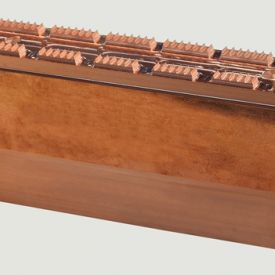Graphite or copper? – Engineering, improvements and innovations keep the electrode manufacture in an ongoing process change. Over the past few years, the trend has been towards copper where spark erosion is concerned.
The miniaturisation of components and lightweight construction need more and more intricate geometries in which copper has many advantages over graphite. In comparison to graphite the electrode manufacture in copper reduces drastically tool wear and improves in a significant manner surface quality and dimensional accuracy. Not to forget, the costs for finer grain types of graphite, required for a burr-free optimum surface for small electrodes, are rising considerably.
Assuring shape and dimensions when processing small electrodes with complex free-form surfaces is especially challenging. Every deviation during spark erosion is transferred 1:1 to the shape and thus directly to the product. In the automotive industry and medical technology, tolerances of 0.02 mm are standard in series production. The tolerances requested to be reached on the products are already part of consideration and adherence during the downstream process. In the case of an injected plastic moulding with a tolerance of 20 µm, the tolerance for electrode manufacture reduces to merely 5 µm along the process chain.
Waibstadt-based APINEX has taken on this ambitious task. Tiny components with minimal tolerances are not the exception at APINEX. To manufacture their products for tool making purposes and the plastics technology sector, APINEX relies predominantly (75%) on the more advantageous copper electrodes. So far, APINEX has used the ZECHA Series 550 ball nose end mill that currently is the benchmark for machining of non-ferrous metals. Unique feature of this series is the geometry optimised for non-ferrous metals, which significantly reduces the cutting forces and assures optimum chip removal.
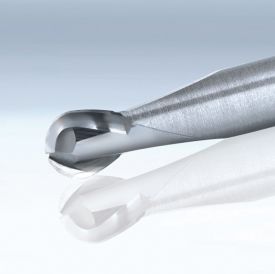
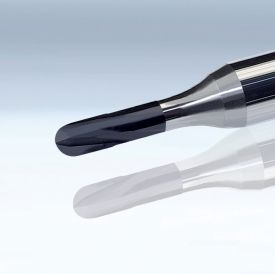
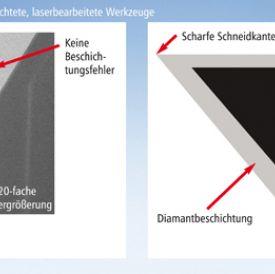
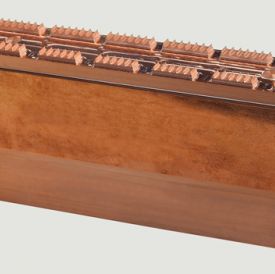
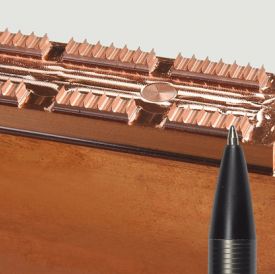
ZECHA Hartmetall- Werkzeugfabrikation GmbH is an innovative company that continues to build on its many years of experience in the field of cutting, stamping and forming tools. By launching of IGUANA high-end tool series in response to constantly rising demands for surface qualities and efficiency, ZECHA is taking an evolutionary step. Thanks to laser processing, sharp cutting edges, as already achieved on soldered CVD tools, are transferred to multi-edged CVD-coated solid carbide tools without altering the hardness and strength of the diamond layer. Worth to mention is the increased life cycle - thanks to the sealed layers - as well as the low cutting forces due to the sharp and defined cutting edge.
The increasing pressure on costs in the automotive industry means that APINEX pursues the ongoing optimisation of internal processes. On account of their many years of cooperation, ZECHA is fully aware of how APINEX's strives to obtain µ-accuracy and high process capability and has come up with the mill cutter series IGUANA as a solution.
To evaluate the performance of the new tool series a 7-X copper electrode with a very intricate geometry has been selected. The electrode was manufactured using solely ZECHA tools, the focus being on the 0.1mm wide webs. Radius cutters of 1mm diameter were used to achieve finest finishing results of the fans.
With focus on process capability, the accuracy of shape and dimensions as well as surface quality could considerably be boosted without any loss of productivity. After comparative measuring the surface quality had improved by over 50% to the average roughness value Ra=0.035µm and the roughness depth to Rz= 0.2µm. Moreover, the intricate webs displayed no burring or chatter marks. Even the finest structures at the end of the web could repeatedly be manufactured in a process capable manner. Furthermore, the tool’s cutting ability is absolutely unique: IGUANA achieved the target contour directly where previously a lateral infeed of 5µm was necessary due to the tool deflection because of tool wear.
The high-end tool alone is, however, no guarantee of optimal results. It is rather the combination of tool -machine - application that is crucial. This finest layer process was devised in close collaboration and exceeds APINEX' expectations. "IGUANA not only improves the result, but also already extends the form life cycle considerably. Particularly amazing is that the cutting edge continues to remain sharp. There is currently still no sign of wear after a current travel path of 270 metres."
APINEX tested the ZECHA IGUANA tool series for copper electrode manufacture and is convinced: "For us, the extremely sharp cutting edge paired with the high wear resistance of the diamond layer was the starting point for a significantly more stable and uniform process - with, at the same time, improved surface quality and dimensional accuracy. Currently, there appears to be no end to the tool's service life in sight. We have always been very satisfied with the Series 550, yet IGUANA has managed to top even this."
The potential offered by this new tool technology can also be applied to other materials. New findings combined with optimum adaptation to the requirements of component materials promise great improvements in different areas of use. It will be exciting to see where the technology will take us in the future.
For more information:
ZECHA Hartmetall- Werkzeugfabrikation GmbH
Benzstraße 2
75203 Königsbach-Stein
Tel: +49 (0)7232 3022-0
This email address is being protected from spambots. You need JavaScript enabled to view it.
www.zecha.de
Editorial offices please note:
Text and photos can be requested as files from ZECHA
Tel: +49 (0)7232 3022-0
This email address is being protected from spambots. You need JavaScript enabled to view it.





